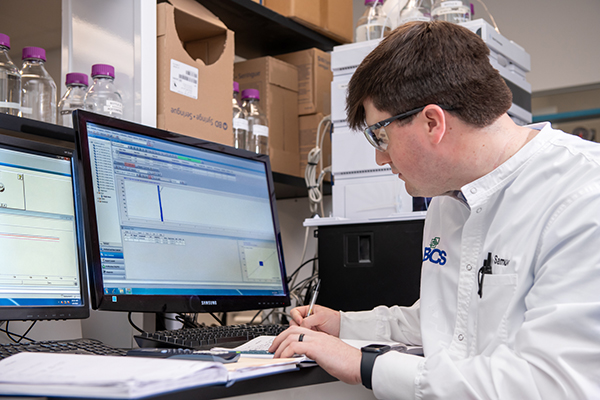Biocides
Choosing the Right Biocide
Selecting the right biocide is essential for maintaining industrial operations free from harmful microbial growth and preserving products for transport and stability. Here’s a guide to help you choose the most effective EPA-registered industrial microbiocide:
Types of Biocides:
Click on any of the links below for more information.

Benzisothiazolin (BIT)
1,2-Benzisothiazolin-3-one
BIT is an excellent long-term preservation biocide that targets a broad spectrum of bacteria and fungi. It is effective in a broad pH range of 2 to 14, and works best applied to products less than 100°C. It is affected by oxidizing and reducing agents.
BCS offers BCS 3096W, a 9% water-based solution; BCS 3196, a 19% glycol-based solution; and BCS 3196W, a 19% water-based dispersion.
Isothiazolin (CMIT/MIT)
5-Chloro-2-methyl-4-isothiazolin-3-one / 2-Methyl-4-isothiazolin-3-one
Isothiazoline is a highly effective general-purpose biocide that targets a broad spectrum of bacteria and fungi. It is effective in a pH range of 2 to 8, unstable above pH of 9, and works best applied to products less than 40°C. It is affected by reducing agents.
BCS offers BCS 3024CF: a 1.5% CMIT/MIT product.
Bronopol
2-Bromo-2-nitropropane-1,3-diol
Bronopol is a general-purpose biocide that targets bacteria. Great long term stability at pH range of 4 to 8, but works best at pH 8 or higher and less than 60°C. Bronopol is compatible with most other biocides and, as it is a fast acting biocide especially effective against Pseudomonas aeruginosa, it is often used in dual programs with longer-term preservatives like isothiazolin or BIT. It is affected by reducing agents.
BCS offers BCS 3101A and BCS 3301A: 10% and 30% glycol-based bronopol solutions.
Glutaraldehyde
Glutaraldehyde is an effective general-purpose biocide with a high percent active ingredient. The optimum pH for glutaraldehyde, in terms of rate of efficacy and half-life, is in the range of 7-9. Glutaraldehyde kills most quickly at alkaline pH and higher temperatures, although its half-life can be shortened, but it is efficacious through a broad temperature range. It is resistant to reductants and oxidants.
BCS offers BCS 3502A: a 50% glutaraldehyde solution, and a range of dilutions (45%, 25%, 15%, 4%) and glute/quat blends (42.5%, 14.5%).
DBNPA
2,2-Dibromo-3-nitrilopropionamide
DBNPA is an effective, general-purpose, quick-kill biocide that targets bacteria, fungi, yeast, and algae. Compatible with oxidizing agents, but affected by strong reducing agents. Relatively short half-life. Optimum pH of 3-8, unstable above pH of ~9. Temperature sensitive and will decompose exothermically (liberate heat) at elevated temperatures; ideal temperatures less than 40°C.
BCS offers BCS 3205: a 20% DBNPA solution.
Dazomet/Thione
Tetrahydro-3,5-dimethyl-2H-1,3,5-thiadiazine-2-thione
Thione is an effective, inexpensive biocide that targets bacteria. Degrades rapidly, incompatible with glutaraldehyde and hydrogen peroxide. pH and temperature determine the amount of formaldehyde release.
BCS offers BCS 3243: a 24% caustic-based thione solution.
